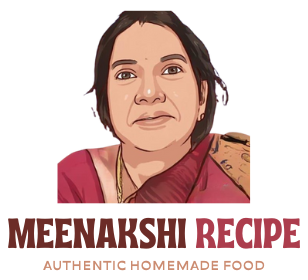Chiwda, also known as Chivda, Poha Chiwda, or simply Mixture, is a snack that has been a part of Indian culinary traditions for centuries.
Crunchy, savory, and sometimes a little sweet, chiwda is made from flattened rice (poha), along with nuts, spices, and sometimes dry fruits.
But have you ever wondered:
👉 Where did Chiwda come from?
👉 What is its historical significance?
Let’s travel back in time and discover the fascinating history of Chiwda!
🌾 Ancient Origins: The Birth of Poha
Before we talk about Chiwda, we must talk about poha, its base ingredient.
Poha (flattened rice) has been a staple food in India for over a thousand years.
Historical references to beaten rice can be found in ancient Indian scriptures and texts like the Mahabharata.
It was known to be a portable, non-perishable, easy-to-cook food, making it a perfect choice for travelers, warriors, and farmers.
In fact, legends say that Lord Krishna was offered a handful of “poha” by his childhood friend Sudama — a story that highlights poha’s humble and spiritual roots in Indian culture.
🏡 How Chiwda Evolved from Poha
The idea of turning simple poha into a more flavorful snack probably came from the need to add variety and nutrition to daily meals.
Adding spices, nuts, salt, and a touch of oil transformed plain poha into something tastier, more satisfying, and richer in nutrients.
Originally, Chiwda was made at home, especially during:
Festivals like Diwali and Holi
Harvest seasons
Special family gatherings
Women in traditional Indian households would prepare large batches of chiwda, store them in tin boxes, and offer them to guests as a tea-time snack.
🕌 Influence of Mughal and Maratha Eras
During the Mughal and Maratha periods (16th–18th centuries), the food culture of India became more sophisticated, with a greater emphasis on snacks and dry foods that could last long.
In Maharashtra, the Marathas popularized various types of chiwda mixes by adding regional touches: using coconut, peanuts, green chilies, and sugar for a sweet-spicy balance.
In North India, more spices, sev, and fried lentils were introduced into the chiwda blends.
Bengal and Odisha preferred lighter versions with mustard seeds and curry leaves.
Thus, depending on the region, the flavor and style of chiwda evolved uniquely.
🛍️ Chiwda Goes Commercial
With the rise of local markets in the 19th and 20th centuries, small vendors began selling fresh chiwda packed in newspaper cones or cloth bags.
Later, major snack brands like:
Haldiram’s
Bikaji
Bikanervala started producing packaged versions of chiwda, introducing it to a larger, urban audience.
Today, you can find countless varieties of chiwda in grocery stores, sweet shops, and online — from low-oil diet chiwdas to highly spiced, premium nut-filled ones.
🌎 Chiwda’s Global Journey
Indian migrants carried the love of chiwda to all corners of the world:
In the UK, it became a popular tea-time snack among the Indian community.
In Australia and New Zealand, “Bhuja Mix” (inspired by chiwda) became a common snack.
In the USA and Canada, Indian grocery stores stock shelves full of different chiwda brands, catering to nostalgic tastes.
It’s amazing to see how a simple homemade snack has now become a global favorite!
🍴 Why Chiwda is Still Loved Today
Even today, chiwda remains close to the hearts of millions because:
It’s light but filling.
It’s easy to customize (spicy, sweet, nutty — however you like!).
It’s affordable.
It reminds people of home, family, and tradition.
In Indian homes, offering guests a plate of chiwda along with tea is not just about food — it’s about sharing warmth, hospitality, and memories.
🎯 Final Thoughts: The Timeless Appeal of Chiwda
From the kitchens of ancient India to supermarket shelves around the world, Chiwda has had an extraordinary journey.
It started as a simple, humble food and evolved into a beloved snack that crosses borders and cultures.
Today, whether you’re grabbing a handful for a quick snack or serving it during Diwali festivities, you are participating in a rich tradition that dates back centuries.
